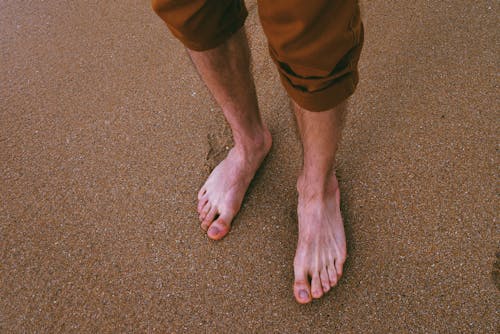A Number Of Features Of Plantar Fasciitis Treatment You Need To Know
For some athletes, simply altering running shoes can significantly relieve plantar fascia discomfort. A physiotherapist can utilize a variety of various taping techniques to support the plantar fascia, providing it an opportunity to heal. Some shoes can be fitted with inserts. One example is an orthotic, which spans the length of the shoe.
Another choice is a heel cup. This insert is developed to support and cushion the heel. Plantar fasciitis is associated with less flexibility in the ankle, Achilles tendon, and calf muscles. Mild stretching to enhance versatility can make the biomechanics of standing, strolling, and jogging less stressful for the plantar fascia.
Using mild pressure, roll the tennis ball back and forth under the foot. Stand 18 inches far from a wall with feet about 6 inches apart and put hands against the wall, at shoulder height. Without moving feet, lean into the wall, bending the foot and extending the Achilles tendon and calf muscles Sit on the floor with legs straight in front.
What Does Plantar Fasciitis Treatment Mean?
Stretches like these last two, in which the top of the foot and toes approach the shin, are called dorsiflexion stretches. Applying a cold-pack or bag of ice to bottom of the foot may offer pain remedy for plantar fasciitis. Relief can likewise be discovered by rolling the bottom of the foot on a frozen plastic water bottle.
Protocol Principles. For runners, increasing the number of actions per mileusing a much shorter stride however increasing cadence to keep speedmay decrease the tension on the plantar fascia although there will be more actions per minute.1.Additional weight puts an increased strain on the plantar fascia tissue. Shedding excess pounds will lighten the load on the body's musculoskeletal system, including the plantar fascia.
This prevents the plantar fascia from resting in a contracted position. (Naturally, lots of people discover these splints hard to sleep in.). While it is ruled out standard treatment, deep myofascial massage might promote blood circulation and recovery. While not all professionals agree, some believe the usage of manual manipulation/mobilization (by a chiropractic specialist or other certified health professional) along with exercise is an effective method to treat plantar fasciitis.2, People with consistent, moderate to extreme cases of plantar fasciitis, might utilize these non-medical treatments in conjunction with medications, injections, or surgical treatments.
Realities Everyone Need To Know About Plantar Fasciitis Treatment

Medications are not a treatment for plantar fasciitis and must be utilized in combination with other treatments. Non-steroidal anti-inflammatory drugs are utilized to minimize swelling and inflammation, and are suggested for clients experiencing moderate to severe pain (Look At This). NSAIDs consist of aspirin (e.g. Bayer), ibuprofen (e.g. Advil), naproxen (e.g. Aleve), and cox-2 inhibitors.
dexamethasone) through healthy skin to the sore location.1 Iontophoresis may be recommended to patients with plantar fasciitis who can't tolerate injections or desire to prevent injections. If non-medical treatments and medications do not provide remedy for plantar fasciitis, clients may think about injections. 1. Wellenkotter J, Kernozek TW, Meardon S, Suchomel T.

Int J Sports Medication. 2014; 35( 9 ):779 -84.2. Bronfort G, Haas M, Evans R, Leininger B, Triano J. Effectiveness of manual treatments: the UK evidence report. Chiropr Osteopat. 2010; 18:3.3. Clar C, Tsertsvadze A, Court R, Hundt GL, Clarke A, Sutcliffe P. Clinical efficiency of manual therapy for the management of musculoskeletal and non-musculoskeletal conditions: methodical review and update of UK proof report.
Plantar Fasciitis Treatment - Wikipedia
The plantar fascia is a long, thin ligament present along the bottom of the foot that develops the arch of the foot. It extends from the heel bone, and then divides and fans out to connect itself to the toes. Plantar fasciitis is a condition where the plantar fascia becomes irritated from overstretching or overuse, causing discomfort in the heel and bottom of the foot.
Plantar fasciitis occurs when you strain or aggravate the plantar fascia ligament. Repetitive pressure can result in small tears in the ligament, causing pain and swelling, which can make strolling challenging. Pressures can occur due to: High or low foot arch Weight problems or sudden weight gain Tight Achilles tendon which connects the calf muscles to the heel Starting a new activity or increasing the strength of an activity Using improper shoes with soles that are too soft, do not fit well or use bad arch support The major grievance of plantar fasciitis is pain and tightness in the heel and foot.
Your doctor might see how you stand and stroll, and evaluate related conditions such as high arches. X-rays of the foot can be taken if your medical professional suspects a stress fracture, a hairline fracture in the bone, or other related conditions such as a heel spur, which is additional calcium deposit on the heel bone.
Why B2B Plantar Fasciitis Treatment Matters
Conservative treatment procedures consist of: Rest: Rest is the first action that is considered for minimizing pain and avoiding additional damage to the ligament. Ice: Rolling your foot over ice can be extremely effective in lowering swelling, and is suggested for 20 minutes, 3-4 times a day Medications: NSAIDs (non-steroidal anti-inflammatory drugs) may be prescribed for relief of pain and inflammation Workout: calf stretches and plantar fascia stretches work in eliminating pain A steroid injection may be administered into the plantar fascia for lowering pain and swelling Helpful shoes and orthotics might likewise be recommended to reduce the pain while strolling or standing Night splints can be recommended by your physician to assist stretch the plantar fascia while sleeping Physical therapy might be recommended for guideline on stretching exercises, massage and ice treatments PT might utilize extracorporeal shockwave therapy (ESWT), which uses high-energy shockwave impulses to promote healing of the damaged plantar fascia tissues Surgical treatment is considered only if conservative therapy does not offer efficient relief after 12 months.
Gastrocnemius recession: Tight calf muscles or gastrocnemius muscles can strain the plantar fascia. To release this tension, your cosmetic surgeon will surgically extend the calf muscle, and increase the movement of the ankle (Click This Site). The surgical treatment can be carried out by open incision or endoscopically through a small incision by using an endoscope, which is a long instrument with a small electronic camera connected.
Your cosmetic surgeon will partly cut the plantar fascia ligament to eliminate the stress. The surgery can be carried out endoscopically but open incision is simpler to perform and is associated with lower threat of nerve damage. Problems are uncommon following surgery to deal with plantar fasciitis, however as with any surgery, they can occur.
What Everyone Ought To Understand About Plantar Fasciitis Treatment
If you are experiencing symptoms of plantar fasciitis, comprehensive treatment from our foot experts is offered at ORA Orthopedics. As the largest and most sophisticated orthopedic practice in the Quad Cities, ORA Orthopedics uses the best options in care to children and adults with a wide selection of musculoskeletal conditions, consisting of plantar fasciitis and other uneasy or uncomfortable foot issues (Go To My Site).
This condition is typically marked by greater foot discomfort and tightness after not throughout workout or extended periods of inactivity. Plantar fasciitis might also cause bone stimulates, or small boney growths, to develop on the heel bone. The experienced medical professionals and personnel at ORA Orthopedics' Foot and Ankle Center of Excellence are trained in the most recent treatment techniques and offer patient-focused care that is second to none in the Quad Cities.
No comments:
Post a Comment